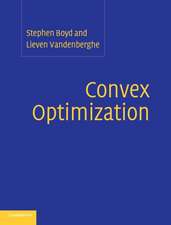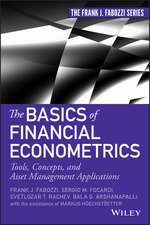Time Series Models for Business and Economic Forecasting
Autor Philip Hans Franses, Dick van Dijk, Anne Opschooren Limba Engleză Paperback – 23 apr 2014
| Toate formatele și edițiile | Preț | Express |
|---|---|---|
| Paperback (1) | 427.35 lei 6-8 săpt. | |
| Cambridge University Press – 23 apr 2014 | 427.35 lei 6-8 săpt. | |
| Hardback (1) | 940.46 lei 6-8 săpt. | |
| Cambridge University Press – 23 apr 2014 | 940.46 lei 6-8 săpt. |
Preț: 427.35 lei
Preț vechi: 485.63 lei
-12% Nou
81.77€ • 85.61$ • 67.66£
Carte tipărită la comandă
Livrare economică 05-19 aprilie
Specificații
ISBN-10: 0521520916
Pagini: 311
Ilustrații: 81 b/w illus. 17 tables 65 exercises
Dimensiuni: 190 x 246 x 15 mm
Greutate: 0.68 kg
Ediția:Revizuită
Editura: Cambridge University Press
Colecția Cambridge University Press
Locul publicării:Cambridge, United Kingdom
Cuprins
Preface; 1. Introduction and overview; 2. Key features of economic time series; 3. Useful concepts in univariate time series analysis; 4. Trends; 5. Seasonality; 6. Aberrant observations; 7. Conditional heteroskedasticity; 8. Non-linearity; 9. Multivariate time series; Index.
Recenzii
'I highly recommend the second edition of this book. The authors have made wise choices of covering the most valuable and practical time-series methods for economic and business forecasting. The text is well written and the exercises and illustrations connect with some of the best statistical software available. In an age of digital time-series data explosion in a variety of disciplines, this book can only gain in importance and impact.' Dominique M. Hanssens, Bud Knapp Distinguished Professor of Marketing, University of California, Los Angeles
Descriere
With a new author team contributing decades of practical experience, this fully updated and thoroughly classroom-tested second edition textbook prepares students and practitioners to create effective forecasting models and master the techniques of time series analysis. Taking a practical and example-driven approach, this textbook summarises the most critical decisions, techniques and steps involved in creating forecasting models for business and economics. Students are led through the process with an entirely new set of carefully developed theoretical and practical exercises. Chapters examine the key features of economic time series, univariate time series analysis, trends, seasonality, aberrant observations, conditional heteroskedasticity and ARCH models, non-linearity and multivariate time series, making this a complete practical guide. Downloadable datasets are available online.













